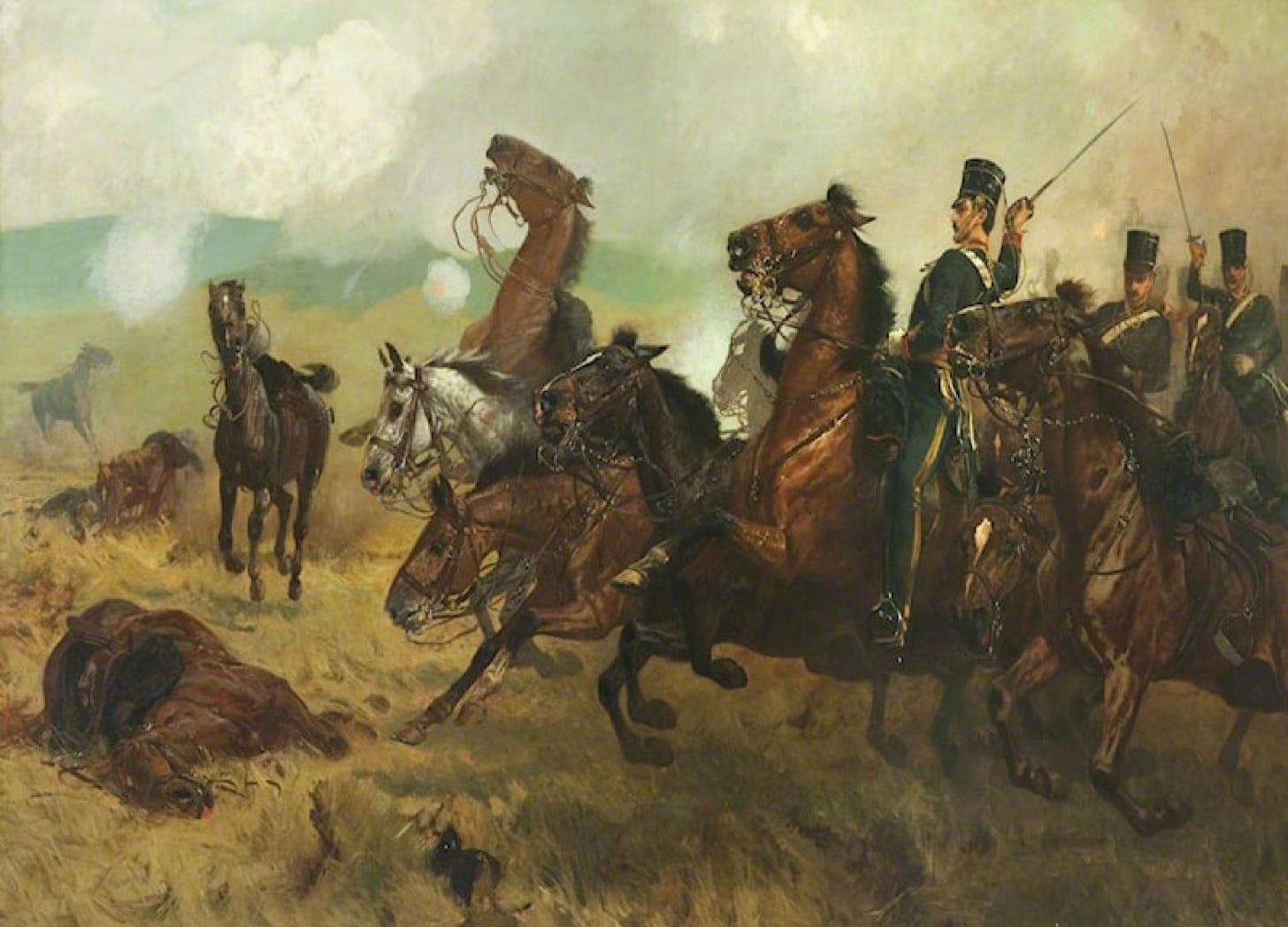
On 2 April 1855, Jefferson Davis, then serving as Secretary of War of the United States of America, ordered three officers of the US Army to make a fact-finding tour of Austria, France, Great Britain, Prussia, Russia, and, most especially, the battlefields of the Crimean peninsula, In his instructions to these gentlemen, Secretary Davis instructed them to obtain information with regard to the military service in general, and, especially, the practical working of the changes which have been introduced of late years into the military systems of the principal nations of Europe.
In particular, Davis asked the three officers - Richard Delafield, Alfred Mordecai, and George B. McClellan - gather information about:
The organization of armies and of the departments for furnishing supplies of all kinds to the troops, especially in field service. The manner of distributing supplies. The fitting up of vessels for transporting men and horses, and the arrangements for embarking and disembarking them. The medical and hospital arrangements, both in permanent hospitals and in the field. The kind of ambulances or other means used for transporting the sick and wounded. The kind of clothing and camp equipage used for service in the field. The kinds of arms, ammunition, and accoutrements used in equipping troops for the various branches of service, and their adaptation to the purposes intended. (In this respect, the arms and equipments of cavalry of all kinds will claim your particular attention.)The practical advantages and disadvantages attending the use of the various kinds of rifle arms which have been lately introduced extensively in European warfare. The nature and efficiency of ordnance and ammunition employed for field and siege operations, and the practical effect of the late changes partially made in the French field artillery. The construction of permanent fortifications, the arrangement of new systems of sea-coast and land defenses, and the kinds of ordnance used in the armament of them — the Lancaster gun, and other rifle cannon - if any are used. The composition of trains for siege operations, the kind and quantity of ordnance, the engineering operations of a siege in all its branches, both of attack and defense. The composition of bridge trains, kinds of boats, wagons, etc.The construction of casemated forts, and the effects produced on them in attacks by land and water. The use of camels for transportation, and their adaptation to cold and mountainous countries. Upon their return from this grand adventure, the three officers - Major Delafield, Major Mordecai, and Captain McClellan - wrote extensive reports, each of which provides an enormous number of first-hand observations of the administration, logistics, and, most of all, the armament of the premier armies of Europe at a time of great change.
In the weeks to come, The Tactical Notebook will publish extracts from these reports that, among other things, will complement the series on The Open Order Revolution begun earlier this week.
Notes
The full text of the letter from Mr. Davis can be found in Richard Delafield Report on the Art of War in Europe in 1854, 1855, and 1856 (Washington: George W. Bowman, 1860) pages V and VI.
Text in italic type quotes, verbatim, parts of the aforementioned letter.
Designed for service aboard warships of the Royal Navy, ‘Lancaster guns’ made use of oval (rather than circular) bores. Landed on the Crimean Peninsula in order to take part in bombardment of the Russian fortress of Sevastopol, these muzzle-loaded rifles proved both inaccurate and prone to jamming. Treatise on the Construction and Manufacture of Ordnance in the British Service ( London: HMSO, 1879) page 81
Location of Digital Copies of the Reports
of Members of the Military Commission to Europe
Delafield Library of Congress
McClellan Library of Congress Michigan California
Mordecai Library of Congress Michigan Cornell Harvard
Most readers will find is easier to read the copies made available by the Library of Congress. However, as the server of that august institution groans under the weight of excessive business, often to the point of depriving visitors of access, I have provided links to alternatives.








Hmmm, imagine the detailed inquiry into the administration and logistics of warfighting on a large scale. An army fights on its belly, short dude with a funny looking hat said that.. he knew if the beans, bullets, bandages and bad guys were not taken into account no matter how brilliant the strategy and tactics, it goes pear shaped when a force doesn’t have what it needs to sustain combat operations. Imagine placing US Marine Rrgiments on island atolls with outdated missile systems to shoot at a combat ant force navy that might or might not materialize, and if it did show up once the Marine salvos were expended the geniuses behind the deployment would have no way to support the Matines logistically…what would Napoleon say… too bad we can’t ask him…Administration and logistics are specifically addressed in the 5 paragraph combat operations order, must be a reason for that paragraph after all. When Major General OP Smith conducted his “Attack in another direction” his foresight on the attack north allowed for significant logistics support build up, which now seems prescient but likely was simply prudent planning, just in case the Chinese didn’t get MacArthur’s memo and decided to hop
In the fight.
Most definitely looking forward to this tranche of documents and discussions!! In another life I broke and trained horses. My favorite saddle was a McClellan. Very versatile; great for carrying weight saddlebags, and scabbard and a great long distance riding saddle. It’s a great saddle to teach beginners because it was designed specifically for those not skilled. Great saddle for teaching balance - and then have the rider learn English. The saddle is also great for long distance- it’s comfortable and allows one to stretch their legs. This saddle which is a cross of the Maygar and British saddles is the best thing McClellan did.